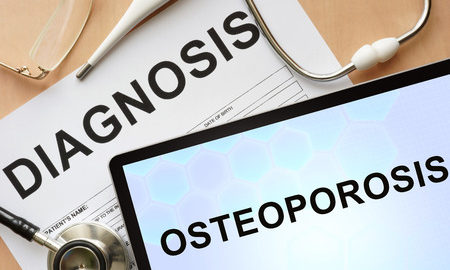Stem Cells Provide Clues for Treating Osteoporosis

Osteoporosis, literally meaning porous bone, is a disease that affects 54 million Americans. People with osteoporosis have low bone density and bones that are weak and more likely to break. It is estimated that approximately one in two women and one in four men above the age of 50 will suffer from a fracture due to osteoporosis.
The disease remains “silent” for the most part and does not cause any symptoms in the early stages. The first sign of osteoporosis is often a broken bone. In elderly persons, a fractured hip, vertebra, or wrist can be devastating. In addition to pain from the fracture, osteoporosis can result in loss of mobility and independence, leading to feelings of isolation and depression.
In addition to its effect on the patient and their family, osteoporosis places a substantial financial burden on the healthcare system. The approximately 2 million osteoporotic fractures each year cost $19 billion in healthcare and related costs. It is projected that by the year 2025, these figures will rise to 3 million fractures and $25 billion in costs.
For decades, scientists have been trying to find new treatments and cures for osteoporosis. One of the biggest challenges has been the ability to understand how stem cells transform. Now, researchers at the University of Missouri have taken a giant step forward in osteoporosis treatment by focusing on the transformation of fat-derived stem cells into bone cells.
Although theoretically stem cell therapies are very promising in treating a variety of diseases and injuries, there are gaping holes in our understanding of how stem cells grow and transform into specific tissue types. “We need to observe the process without interfering with it,” explains Elizabeth Loboa, lead researcher at the University of Missouri.
The team has analyzed and studied a new method of monitoring transforming stem cells. According to the study published in the journal Stem Cells Translational Medicine, the researchers took adipose stem cells from several participants of various ages. These stem cells were observed using a technique called ECIS (electrical cell-substrate impedance spectroscopy) and their transformation into bone cells was examined. The cells from older donors underwent faster transformation but had lower calcium levels.
This is the first time that ECIS has been used to monitor the transformation of fat-derived stem cells into bone cells. The results suggest that the technique may be useful in measuring the osteogenic (bone forming) potential of hASC (human adipose stem cells) and tracking the different stages of cell differentiation. Researchers may also be able to better explain the underlying biological processes that lead to variability among donors of different age groups. Because ECIS provides real-time results, the technology can be used to track the entire hASC differentiation process.
References:
- http://www.upi.com/Health_News/2016/10/05/Stem-cell-transformation-provides-insight-into-osteoporosis/5701475696806/
- https://www.nof.org/patients/what-is-osteoporosis/


